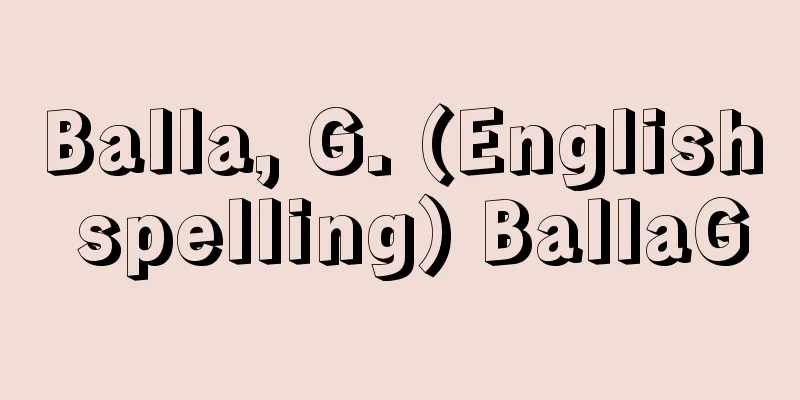Performance

|
The original meaning of the word is "to carry out completely." In psychology, it is used to mean that latent mental abilities are exercised in a real situation and an action is "carried out." In linguistics, it means "language operation" when language activities are performed based on linguistic abilities. However, the current common usage refers to art of unique actions that cross-cut various genres in 20th century art. In this case, it is often called performance art. However, it is different from existing performing arts. In other words, although the action is performed, the actor himself is presented, rather than acting in a specific theatrical world in which he is dressed as a certain person, and only independent physical actions without dramatic form are presented, rather than actions with dramatic meaning. Therefore, unlike opera, which includes dramatic actions, it is often the case that sound production actions accompanied by actions are simply presented. In either case, the major characteristic is that it simultaneously appeals to the visual, auditory, and kinesthetic senses. Therefore, in the case of a popular music performance, not only the performance itself but also laser beams, lighting, the way singers and musicians appear on stage, and their movements are also called performances. However, in the narrow sense, it refers to something that is not accompanied by singing or playing, but is performed as an independent form in itself. [Susumu Shono] Establishment of the conceptHappenings and events held in the 1960s are also included in the term performance, but the term performance itself only became commonly used as a comprehensive concept around the end of the 1970s. However, its precursors can be traced back to the early 20th century. In the 1910s, Italian and Russian Futurists often held provocative demonstrations to effectively express their ideas, which are considered to be the earliest examples of performance. Similar tendencies can be seen in the intense provocative actions of the Dadaists and the activities of the Surrealists that followed in Europe after World War I. Oskar Schlemmer (1888-1943) and others at the Bauhaus staged abstract compositions of sound, light, and color. However, it was the Fluxus group's activities in the 1960s that led to its full-scale development. Although there was a period of stagnation in the early 1970s, by the 1980s this trend had spread to the pop music scene, led by Laurie Anderson (1947-), and it was also combined with technology to give rise to new developments. [Susumu Shono] "Performance" by R. Goldberg, translated by Yusuke Nakahara (1982, Libroport) [References] | |Source: Shogakukan Encyclopedia Nipponica About Encyclopedia Nipponica Information | Legend |
|
本来の語義は「完全に遂行すること」であり、心理学用語としては、潜在的な心的諸能力が現実の場面で発揮され、行為が「遂行」されるという意味で用いられ、言語学では言語能力に基づいて言語活動がなされる際の「言語運用」という意味をもつ。しかし現在一般的な用法は、20世紀の芸術において、諸ジャンルと横断的にかかわる独特の行為の芸術をさす。この場合、パフォーマンス・アートとよばれることも多い。ただし既成の上演芸術(パフォーミング・アーツperforming arts)とは異なる。すなわち、行為が上演されるとはいえ、固有の演劇的世界のなかで、ある人物に扮(ふん)して演技が行われるのではなく、演技者自身が呈示されるし、劇的意味をもった行為ではなく、劇的形式をもたない、独立した身体的動作のみが呈示される。したがって劇的行為を含むオペラとも異なり、単に動作を伴った音響生産行為が呈示されることも多い。いずれの場合にも視覚・聴覚・運動感覚に同時に働きかける点に大きな特徴がある。したがって、ポピュラー音楽の上演の際、単なる演奏だけでなく、レーザー光線や照明、歌手や奏者の舞台への登場の仕方や動作などが演出された場合もパフォーマンスとよばれる。ただし狭義には、歌や演奏に伴うものではなく、それ自体独立した形態として行われるものをさす。 [庄野 進] 概念の成立1960年代に行われたハプニングhappeningやイベントeventもパフォーマンスに包摂されるが、パフォーマンスということば自体が包括概念として一般的に用いられるようになったのは、70年代末ごろからである。しかしその先駆形態は、20世紀初頭にまでさかのぼることができる。1910年代にイタリアやロシアの未来主義者たちは、自分たちの思想を効果的に表現するために、しばしば挑発的なデモンストレーションを行ったが、それらはもっとも早いパフォーマンスの実行であったと考えられる。続いて第一次世界大戦後のヨーロッパ各地で展開されたダダイストたちの激しい挑発的行動や、シュルレアリストたちの活動のなかにも同様の傾向がみられる。また、バウハウスのO・シュレンマーOskar Schlemmer(1888―1943)らは、音と光と色彩の抽象的な構成を上演する活動を行っていた。しかし、本格的な展開は、60年代のフルクサスFLUXUS・グループの活動による。70年代初めに 一時停滞期があるものの、80年代にかけては、L・アンダーソンLaurie Anderson(1947― )ら、ポピュラー音楽のシーンにもこの傾向が広がり、また、テクノロジーと結合するなど新たな展開をみせている。 [庄野 進] 『R・ゴールドバーグ著、中原佑介訳『パフォーマンス』(1982・リブロポート)』 [参照項目] | |出典 小学館 日本大百科全書(ニッポニカ)日本大百科全書(ニッポニカ)について 情報 | 凡例 |
Recommend
Kamigayatsuri - Kamigayatsuri
→Papyrus Source : Heibonsha Encyclopedia About MyP...
Aldehyde - aldehyde
A general term for compounds with an aldehyde gro...
H Theorem - Ecchi-Teiri
…Boltzmann discovered the quantity E = ∫……∫ f log...
Mithradates II
…Reigned 124 or 123 BC - 88 or 87 BC. Also known ...
Lophophora williamsii (English spelling) Lophophorawilliamsii
... E . pentalophus var. procumbens (Eng.) Krainz...
Hot water equipment
Equipment that supplies hot water to places where ...
Sanekane Saionji - Saionji Sanekane
Year of death: Genkyo 2.9.10 (1322.10.21) Year of ...
Giant Golem
...Later it became a legend, in which a clay fetu...
Screamer (screamer)
A general term for birds of the Anhimidae family, ...
Pinianus
…She is famous, along with her grandmother Melani...
Collection of seals - Inshuyu
...A book in the form of a book made by stamping ...
Kishoden - Kishoden
According to historical documents from the mid-12t...
Venetian School - Venecia (English spelling) Scuola Veneziana
A school of art that flourished in the Italian ci...
Kagawa Waterworks Project
...Since the late 1960s, projects to store the ab...
Haruo Umezaki
Novelist. Born in Fukuoka City on February 15, 19...








![Miyota [town] - Miyota](/upload/images/67ccf7df98576.webp)
